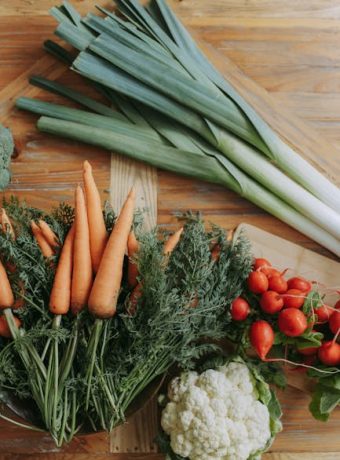Healthy Food in Scandinavian Cuisine: Light and Healthy
As we explore global cuisines in search of healthier eating habits, Scandinavian cuisine stands out for its simplicity, natural flavors, and health benefits. Known for its reliance on fresh, local ingredients, this culinary tradition offers a plethora of dishes that are not only delicious but also nourishing. In this blog post, we will delve into the world of healthy Scandinavian food, highlighting its benefits and offering actionable tips for incorporating these meals into your daily diet.
Understanding Scandinavian Cuisine
Scandinavian cuisine encompasses the traditional foods of Denmark, Norway, Sweden, Finland, and Iceland. It is characterized by its use of fresh, seasonal ingredients, often sourced locally. The region’s harsh winters and short growing seasons have influenced a diet rich in preserved foods, such as fermented fish and pickled vegetables, which are also high in nutritional value.
The Nordic Diet: A Heart-Healthy Choice
The Nordic diet, a modern interpretation of traditional Scandinavian eating habits, has been recognized for its health benefits. Research published in the British Medical Journal suggests that following a Nordic diet can reduce the risk of heart disease and improve overall health.
Key Ingredients in Scandinavian Cuisine
Scandinavian dishes often feature a few key ingredients, known for their health benefits:
Fish and Seafood
Rich in omega-3 fatty acids, fish like salmon, herring, and mackerel are staples in Scandinavian diets. These nutrients are essential for heart health, reducing inflammation, and supporting brain function. According to the American Heart Association, consuming fish twice a week can significantly lower the risk of heart disease.
Berries
Scandinavians love their berries, which are abundant in the region. Lingonberries, blueberries, and cloudberries are packed with antioxidants, vitamins, and minerals that boost immunity and protect against chronic diseases.
Root Vegetables
Root vegetables like carrots, beets, and potatoes are not only versatile but also nutrient-dense. They are high in fiber, vitamins, and minerals, making them a great addition to a balanced diet. Roasting or boiling them brings out their natural sweetness and enhances their flavor.
Whole Grains
Whole grains, including rye, barley, and oats, are integral to Scandinavian meals. These grains are excellent sources of fiber, which aids digestion and helps maintain healthy blood sugar levels. A study by the Harvard School of Public Health found that a diet rich in whole grains can reduce the risk of type 2 diabetes and cardiovascular disease.
Traditional Scandinavian Dishes with a Health Twist
Let’s explore some traditional Scandinavian dishes that are both healthy and delicious:
Gravlax
Gravlax is a classic Scandinavian dish made from salmon cured with salt, sugar, and dill. This simple preparation preserves the fish’s flavor and nutrients while adding a unique twist. Serve it on rye bread with a mustard-dill sauce for a light and healthy meal.
Smørrebrød
Smørrebrød, an open-faced sandwich, is a popular Danish dish that can be tailored to suit any dietary preference. Topped with fish, lean meats, or vegetables, and served on whole-grain bread, it offers a balanced meal with plenty of nutrients.
Raggmunk
Raggmunk is a Swedish potato pancake that is typically served with lingonberry sauce. By using whole-grain flour and baking instead of frying, you can enjoy a healthier version of this classic dish.
Actionable Tips for Incorporating Scandinavian Foods
Embracing Scandinavian cuisine in your diet doesn’t have to be complicated. Here are some simple tips to get started:
Start with Breakfast
Consider starting your day with a healthy Scandinavian breakfast. Opt for oatmeal topped with fresh berries and nuts for a fiber-rich meal that will keep you full and energized.
Incorporate Fish into Your Weekly Menu
Try adding fish to your diet at least twice a week. Whether it’s grilled salmon or a hearty fish stew, incorporating seafood will provide essential nutrients and improve your overall health.
Experiment with Whole Grains
Substitute refined grains with whole grains like rye or barley in your meals. These grains can be used in salads, soups, or as a side dish to boost your fiber intake.
Conclusion
Scandinavian cuisine offers a plethora of healthy options that are both delicious and nutritious. By focusing on fresh, local ingredients and traditional cooking methods, you can enjoy a diet that promotes wellness and longevity. Whether you’re looking to try new recipes or adopt a healthier lifestyle, Scandinavian cuisine provides ample inspiration for light and healthy eating.
As you explore these dishes and incorporate them into your routine, you’ll discover the rich flavors and health benefits inherent in this remarkable culinary tradition. Bon appétit!



